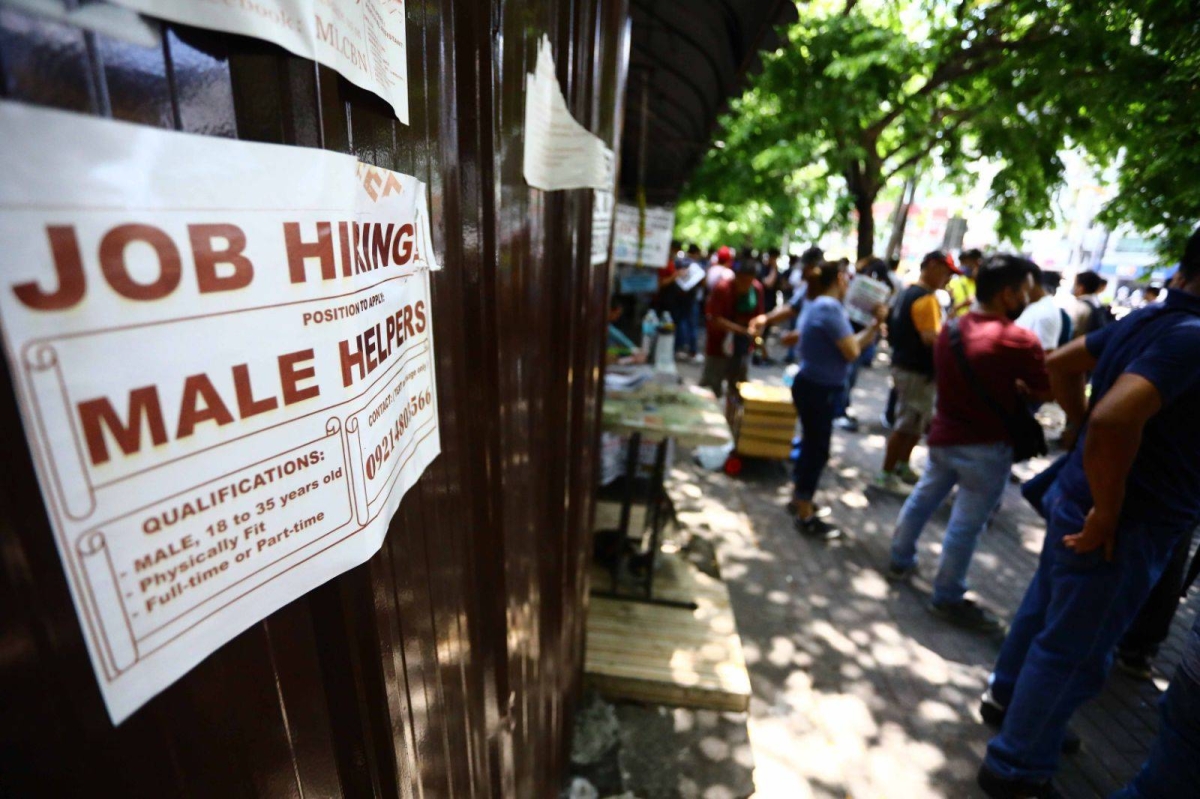UNEMPLOYMENT dropped in April from a month earlier, the Philippine Statistics Authority (PSA) reported on Friday.
The country’s jobless rate declined to 4.5 percent from 4.7 percent in March but underemployment — which counts those looking for more work or an extra job — registered an uptick to 12.9 percent from 11.2 percent in the previous month.
Reckoned from a year earlier, both unemployment and underemployment improved from 5.7 percent and 14.0 percent, respectively.
“To ensure the continuation of this trend, the government affirms its commitment to the unimpeded implementation of economic liberalization reforms and other essential legislation,” Socioeconomic Planning Secretary Arsenio Balisacan said in a statement.
“These efforts will be complemented by comprehensive collaborations among government entities and society as a whole to enhance the employability and productivity of our workforce,” he added.
delivered to your inbox
The number of unemployed persons as of April registered at 2.26 million, down from 2.76 million a year earlier, while the underemployed totaled 6.2 million, also lower than the 6.4 million seen in April 2022.
Employment ticked up to 95.5 percent in April from 95.3 percent in the previous month. It was also higher than the 94.3 percent recorded in the same month last year.
The number of Filipinos with jobs rose to 48.06 million, an increase of 5.32 million from 45.63 million in April 2022.
The year-on-year gain in employment was driven by the services sector. The top five sub-sectors contributing to the increase were wholesale and retail trade and the repair of motor vehicles and motorcycles, accommodation and food service activities, administrative and support service activities, transportation and storage, and other service activities.
Wage and salary workers continued to account for the largest share of the employed at 61.5 percent of the total.
The Labor Force Participation Rate (LFPR), meanwhile, increased to 65.1 percent in April from 63.4 percent a year earlier but was lower than the 66.0 percent in the previous month.
LFPR among males was higher (75.4 percent) compared to females (54.7 percent), however, the employment rate was higher among females at 96.0 percent than their male counterparts at 95.2 percent.
Balisacan said the government could capitalize on digital technologies to foster innovation, upgrade services, and effectively respond to the needs of the workforce.
“[T]he complete execution of the Philippine Digital Workforce Competitiveness Act is also vital for equipping the workforce with digital technology skills and fostering innovation,” he added.
He noted the need for collaboration among government agencies, training institutions, technology providers, and other stakeholders to address skills mismatches, provide guidance on in-demand skills, and empower Filipinos through the utilization of technologies such as artificial intelligence.


















